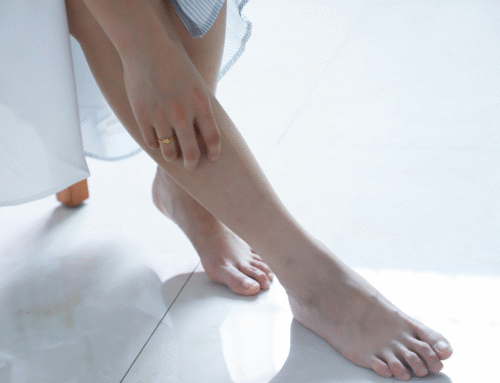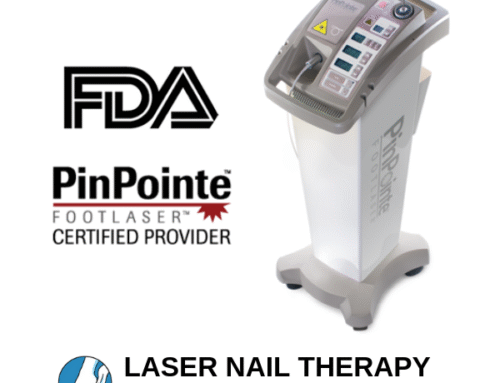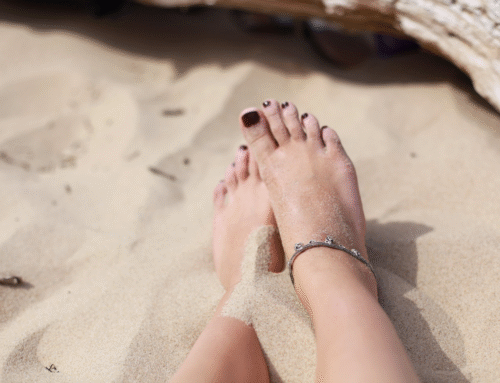Struggling with a stubborn toenail fungus infection? Laser toenail fungus treatment in Indianapolis might be the solution for you. If you’re trying to eradicate a persistent toenail fungus infection, then you should visit our licensed podiatrist. They will consult you and give you the best treatment option to get rid of the toenail fungus infection. Using advanced laser technology, this treatment targets the fungus directly without harming surrounding healthy tissue.
Common Symptoms
Symptoms can vary depending on the type and severity of the infection. Some people may experience only mild discoloration, while others develop thick, painful nails. Paying attention to even small changes can help catch the infection early. Regular foot inspections are key to maintaining healthy nails.
Toenail fungus often starts subtly, making early detection important. Symptoms may appear slowly and worsen over time. Noticing changes early helps prevent spreading and allows for faster treatment. Below are common signs to watch for:
- Yellow or white spots on the nail
- Thickened or brittle nails
- Crumbly or ragged nail edges
- Distorted or irregular nail shape
- Nail lifting away from the nail bed
- Foul odor from the infected nail
- Redness, irritation, or swelling around the nail
- Pain or discomfort when walking or wearing shoes
Different types of toenail fungus infections
The most common type of toenail fungus is distal subungual onychomycosis. It usually starts at the nail tip and spreads underneath. The nail becomes yellow, thick, and brittle over time. This type is often caused by dermatophyte fungi, which thrive in warm, moist areas. It is the hardest to treat because the infection forms deep under the nail.
Another type is white superficial onychomycosis, which affects the top layer of the nail. It appears as white, chalky patches on the surface. The nail may become soft and crumbly as the infection worsens. Candida onychomycosis is another form caused by yeast, often affecting people with weakened immune systems. It can cause swelling, pain, and discoloration near the nail edges.
A less common type is proximal subungual onychomycosis, which begins near the nail cuticle. This infection spreads outward toward the nail tip. It often appears as a white or yellow area at the nail base. This type may indicate an underlying immune problem and requires medical attention. Early treatment can prevent it from spreading to other nails.

Why did I get infected with toenail fungus?
Toenail fungus infections develop when fungi enter through small cracks or cuts around the nail. These openings allow spores to grow underneath the nail surface. Warm, moist environments, such as sweaty shoes or damp floors, help the fungus thrive. Over time, the infection spreads deeper and becomes harder to treat.
Fungal spores are highly contagious and can survive on surfaces like floors, towels, or shoes for long periods. Walking barefoot in public areas increases the chance of exposure. Once the fungus attaches to the nail, it can grow slowly and persist for months or years. Proper hygiene and foot care are essential to reduce the risk of infection.
People with weakened immune systems or poor foot hygiene are more at risk. Wearing tight shoes or sharing nail tools can also spread the fungus. Once the infection starts, the fungus feeds on keratin in the nail. This causes discoloration, thickening, and nail damage if left untreated.
Nail salons and toenail fungus infections
Before visiting a nail salon, check that the salon follows proper hygiene and sanitation practices. Ensure tools are sterilized between clients. Avoid salons that reuse nail files, buffers, or clippers without cleaning them properly. Bring your own tools if possible to reduce infection risk.
Make sure the nail technician washes their hands and wears gloves during your service. Avoid cutting or pushing back cuticles too aggressively, which can create entry points for fungus. Choose a salon that uses disposable liners for foot baths. Inspect foot baths for cleanliness before soaking your feet.
After your nail appointment, if you used you own nail tools, disinfect your tools and avoid sharing them with others. Keep your nails clean and dry to prevent fungal growth. If you notice redness, swelling, or discoloration, seek treatment promptly. Regularly inspect your toenails to catch any early signs of infection.

Toenail Fungus treatment in Indianapolis
If you have caught toenail fungus, it can be easily treated using the FDA-approved PinPointe laser, which typically only takes one treatment. Other treatments like topical solutions and oral medication are not as effective. Topical solutions have a very low cure rate. This is because the solution does not penetrate all the way through the nail bed. Oral medication has a higher cure rate than topicals, but our nail doctors do not recommend it. This is because it can lead to liver toxicity. You would need to have consistent blood tests throughout the course of taking the medication.
Our toenail fungus specialist in Indianapolis, IN recommends this treatment for toenail fungus. The PinPointe Laser treatment has the highest cure rate in the market. It has no side effects and no recovery period. As a result, you can go about your daily activities right after the treatment. Also, there’s no pain when receiving the treatment.
Have more questions about stubborn toenail fungus? Schedule a free consultation with our foot doctors! If you have any signs of toenail fungus, call us at 800-672-0625 at our Indianapolis, IN location, or visit our website for more information on our doctors at one of our over 150 locations.





